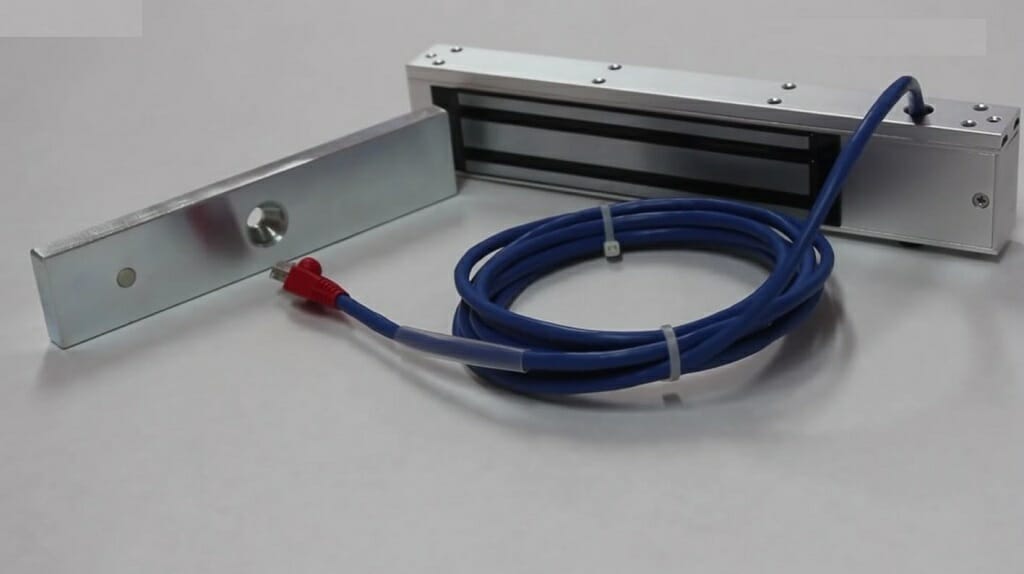Magnetic locks are an excellent way to secure your home, office, or commercial property. Magnetic door locks are far superior to traditional locks in many ways but how do they work?
Our article will go through the mechanism of magnetic door locks and how exactly they come to function, whether they are safe, and why they are a better alternative to traditional locks.
In general, magnetic door locks produce a large magnetic force using the electric current. This massive force is used to prevent doors from opening. Usually, the magnetic lock comes with an armature plate and electromagnet.
Parts of a Magnetic Door Lock
An ordinary lock mainly includes a latch and bolt. However, magnetic door locks are a bit different. They consist of an armature plate and an electromagnet.
Electromagnet
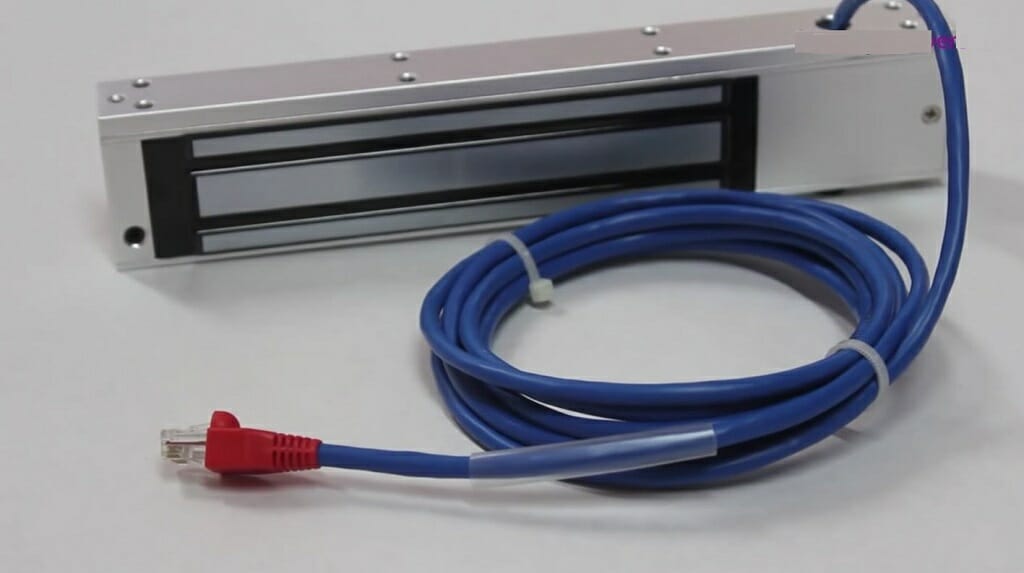
An electromagnet is designed to produce a large amount of magnetic force. It uses an electrical current to create this magnetic field. You can easily turn off the magnetic field by cutting off the power. So, if you supply the current, this magnet will work but without current, It will be disabled. (1)
Armature Plate
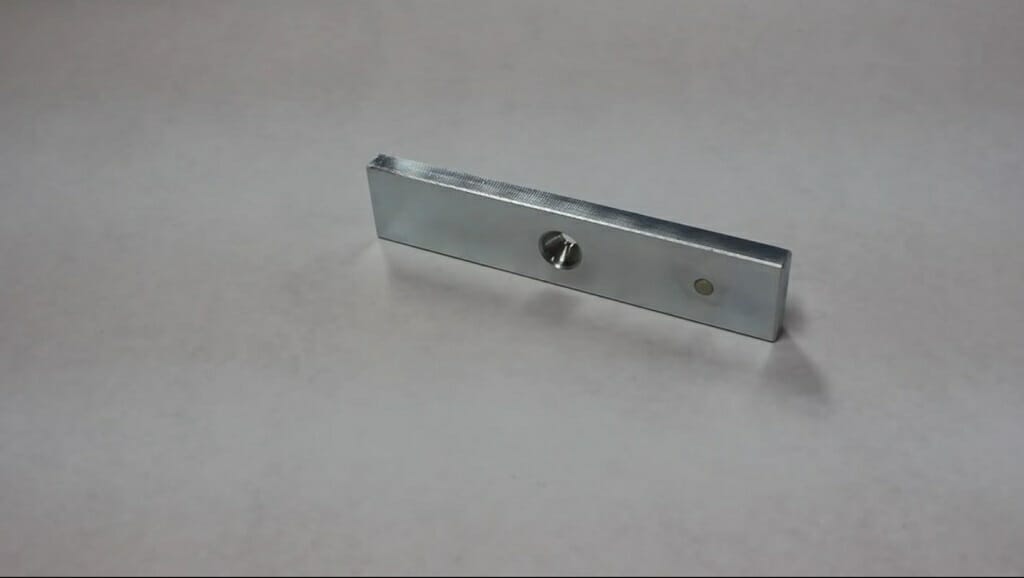
The armature plate allows the electromagnet to lock onto it when the power is up. This is a ferromagnetic plate that can use with various armature mounting plates.
Armature Mounting Plate
These types of plates are produced to hold the armature plates. Apart from the regular mounting plate, you can find various mounting plate designs in the market. For instance, you can find mounting plates in the form of L-shaped, U-shaped, Z-shaped locks, and more.
The Purpose of a Magnetic Lock
A magnetic lock is an automatic lock that works on magnetic force. When you power up the electromagnet the armature plate will attach to the magnet. When you cut the power the armature plate will separate from the magnet. It is a simple system that can be excellent for securing doors and entry points. You’ll be able to unlock the door in two different ways.
Method 1 – By Cutting the Power
You can cut the power by pushing the buzzer switch. This is the easiest way to unlock the door.
Method 2 – By Using an Access Control System
An access control system comes with a keypad, biometric scanner, or card reader. After verifying the identity, the access system control unlocks the door. (2)
Fail-Safe Mechanism
These magnet locks come with an excellent fail-safe mechanism. In case of an emergency such as a fire, the power will be out. When that happens, the magnet lock automatically stops working and opens the door for you. So you won’t get locked in your room.
How to Install Magnet Door Lock?
If you are a newbie to electromagnetic locks, you’ll find this section immensely valuable. Here, I’m hoping to show the installation process of a magnetic door lock. For this demonstration, I’m going to use an out-swing door.
Tools Needed
- Drill
- Pencil
- Ruler
- Philips screwdriver
Step 1 – Mark the Screw Holes for Armature Plate
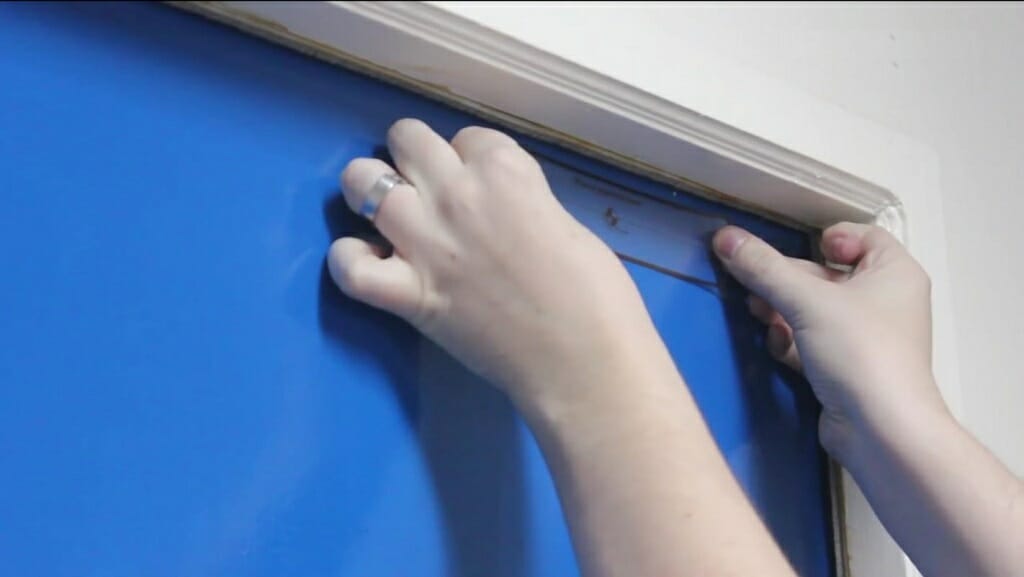
First and foremost, mark the armature plate’s screw holes on the door. Use a pencil and ruler for this.
Step 2 – Drill the Screw Holes for the Armature Plate

Choose the correct drill bit size and drill the previously marked screw holes.
Step 3 – Install the Armature Plate
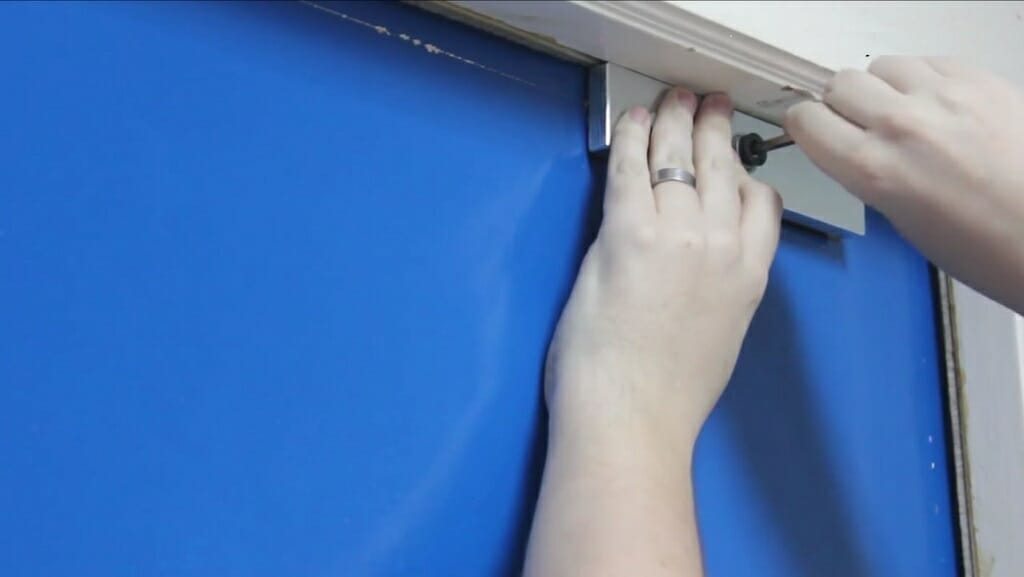
Now, position the armature plate on the door and tighten the screws.
Step 4 – Mark the Location of the Electromagnet
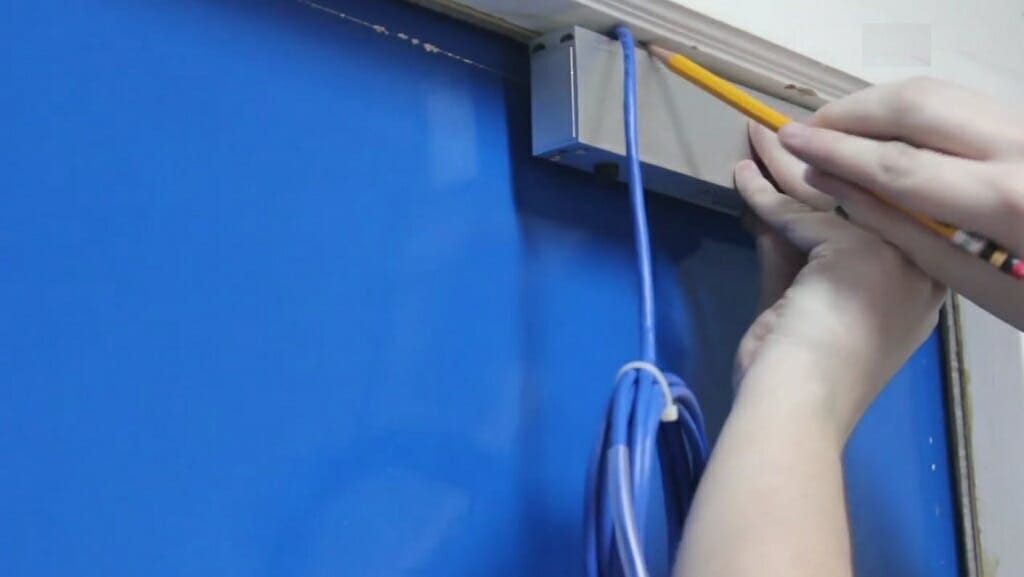
Next, correctly align the electromagnet and the armature plate. Then, mark the location of the electromagnet on the door frame. Remember to mark the screw holes and wire holes too.
Step 5 – Drill the Holes for Electromagnet
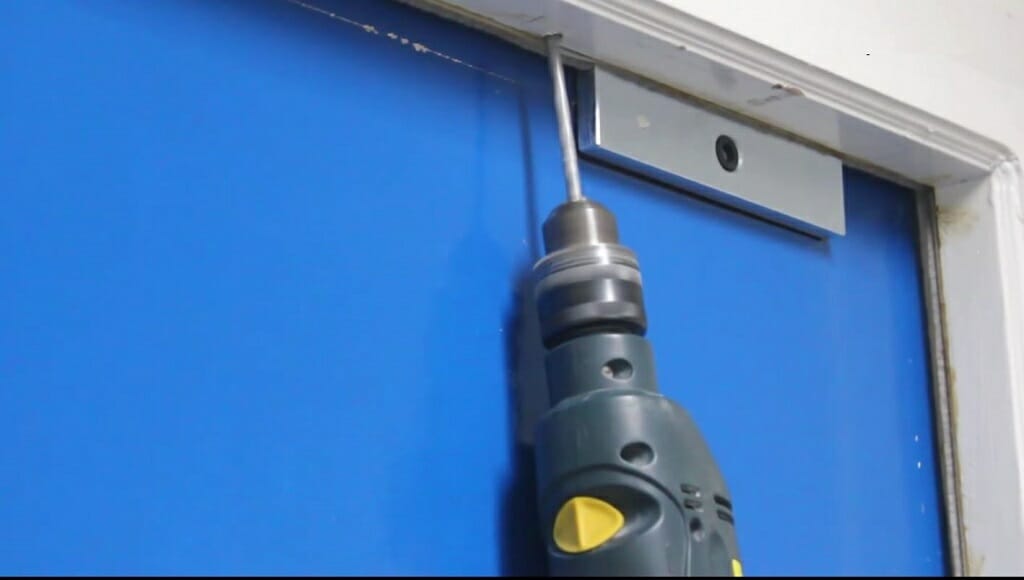
Drill the screw and wire holes for the electromagnet. Use the correct drill bit for this operation.
Step 6 – Install the Electromagnet
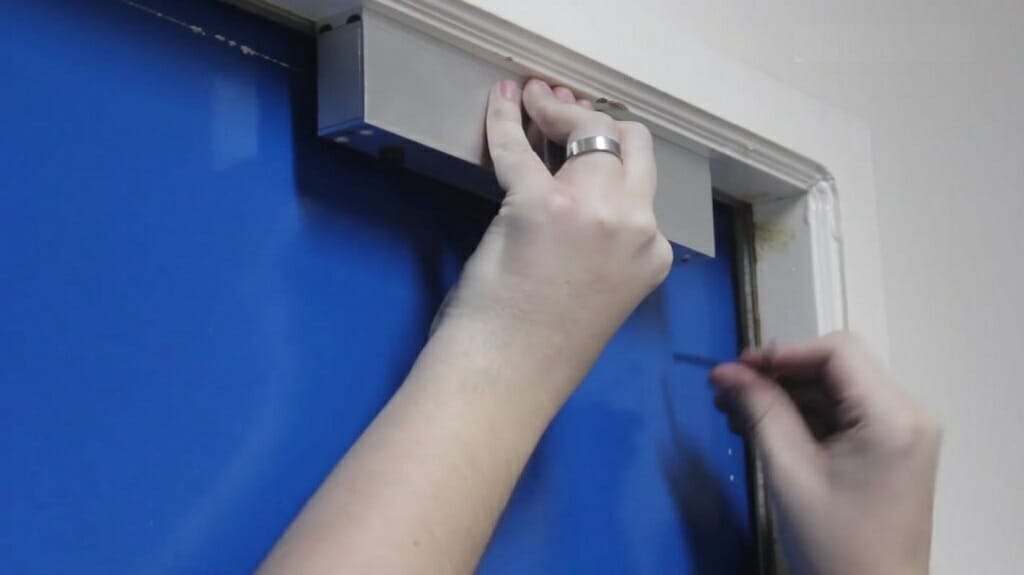
Tighten the screws of the electromagnet using a Philips screwdriver.
Step 7 – Check the Magnetic Door Lock

Finally, provide the current to the magnetic lock and check if it’s working or not.
Commercial Use of the Magnetic Door Lock
A magnetic door lock can withstand a force of 600lbs to 1500lbs. There is no doubt that magnetic locks are a flexible option for commercial uses. You can use these locks to secure entry points inside and outside doors. Below you can find the most common uses of magnetic locks.
- For single doors, double doors, or glass doors
- To secure automatic sliding and swing doors
- For access control systems
- They can be pretty beneficial for security gates
- For emergency exits (with fail-safety mechanisms)
Why Should I Choose a Magnetic Door Lock?
Using a magnetic door lock comes with many advantages. Whether you use these magnetic locks for home, office, or anywhere else, you can appreciate the following advantages.
Easy Installation
If you follow the above installation process, you probably have a good idea about installing a magnetic lock. Besides, the installation is pretty easy and takes only 5 minutes. After properly marking the screw holes, you can effortlessly complete the other steps.
Highly Durable
Unlike traditional locks, these magnetic door locks do not have any moving parts. Besides, you don’t have to use a key. So, compared to traditional locks, these magnetic locks do not wear out easily.
User Friendly
When using a traditional lock, you’ll have to carry a key everywhere. Sometimes, you might lose the key. But, magnetic locks eliminate both of these factors. After all, the locking mechanism is highly reliable and instant.
High-Level Security
When you use a traditional lock, you might face some security threats. Even if the door is locked, burglars might break into your house. But, if you use a magnetic lock, burglars will face difficulties when they are trying to break into your place because of the strong holding force.
Wrapping Up
With a convenient fail-safety mechanism and high security, these magnetic locks are gaining popularity every day. In the future, you might be able to see more and more magnetic locks in modern households. Besides, you can use a backup power source to keep the magnetic lock active. So, you don’t have to worry about sudden power outages.
Take a look at some of our related articles below.
References
(1) electromagnetic – https://www.britannica.com/science/electromagnetism
(2) biometric – https://www.kaspersky.com/resource-center/definitions/biometrics
Video Reference

